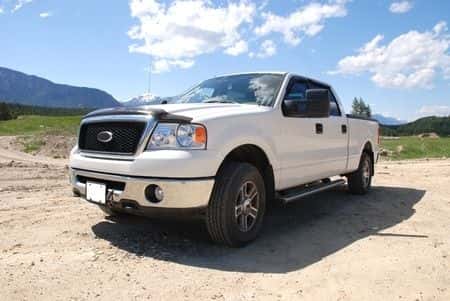Automotive Design Expert Evaluates Safety of Pickup Truck
Updated on
In this case, an automotive design expert was brought in by the plaintiff to examine the safety of the pickup truck he was driving during a severe accident. The plaintiff was driving a 1993 pickup heavy duty truck when he was involved in a three-vehicle accident on a two-lane highway. The driver of another pickup was traveling in the opposite direction and crossed the center line, striking plaintiff’s vehicle. A car traveling behind plaintiff underrode the rear of the plaintiff’s vehicle. According to black box data, all three vehicles were travelling 43 mph, below the 50 mph limit.
The crash forced plaintiff’s vehicle partially off the road and into a ditch, where it burst into flames. As a result of the crash, the engine compartment and dash intruded into the plaintiff’s lap, trapping him. He was freed by rescue workers a short time later and flown to the hospital. He suffered multiple traumatic injuries, including numerous fractures, and burns over 40 percent of his body, including his face and head. His lower leg and forearm were amputated, and he underwent numerous surgeries.
He alleges that he survived the head-on crash but that the truck’s unsafe design led to him being trapped and the fuel-fed fire that caused his horrific injuries. He seeks more than $10 million in medical expenses and $8 million in economic damages.
Question(s) For Expert Witness
1. Was the vehicle design safe?
2. Does it differ from similar vehicles in its class?
Expert Witness Response
 The majority of the accident damage to the plaintiff’s truck was from the frontal impact with the other truck. I disagree with the plaintiff’s assessment that his truck is defective in design.
The majority of the accident damage to the plaintiff’s truck was from the frontal impact with the other truck. I disagree with the plaintiff’s assessment that his truck is defective in design.
 Based on accident reconstruction analysis performed by another expert, the change in velocity or the delta V experienced in the offending truck is computed to be 37 to 39mph while the delta V experienced in the plaintiff’s truck is computed between 43 to 45mph. When comparing this crash to all frontal crashes, the National Highway Transportation Safety Administration (NHTSA) places this crash in the very severe region. Based on cumulative delta V, almost all other crashes happening in the roadways can be placed below the severity of the delta V encountered in the plaintiff’s truck. The severity level experienced by his truck has a high probability of resulting in fatal injuries for occupants. The fact that he survived proves that this vehicle is safe and managed the crash energy well.
Based on accident reconstruction analysis performed by another expert, the change in velocity or the delta V experienced in the offending truck is computed to be 37 to 39mph while the delta V experienced in the plaintiff’s truck is computed between 43 to 45mph. When comparing this crash to all frontal crashes, the National Highway Transportation Safety Administration (NHTSA) places this crash in the very severe region. Based on cumulative delta V, almost all other crashes happening in the roadways can be placed below the severity of the delta V encountered in the plaintiff’s truck. The severity level experienced by his truck has a high probability of resulting in fatal injuries for occupants. The fact that he survived proves that this vehicle is safe and managed the crash energy well.
 Similar to all vehicles in its class, the plaintiff’s truck used a body-on-frame architecture. This type of construction allows these vehicles to be used as work trucks. The factors that influence the road load and durability characteristics of these trucks also make them perform well in a crash scenario. The entire industry was following similar design practices in the construction of pickup trucks at this time.
Similar to all vehicles in its class, the plaintiff’s truck used a body-on-frame architecture. This type of construction allows these vehicles to be used as work trucks. The factors that influence the road load and durability characteristics of these trucks also make them perform well in a crash scenario. The entire industry was following similar design practices in the construction of pickup trucks at this time.
 The plaintiff’s expert has overlooked several key attributes. I disagree with his opinion. The truck design is safe for reasonable crash scenarios.
The plaintiff’s expert has overlooked several key attributes. I disagree with his opinion. The truck design is safe for reasonable crash scenarios.
 The design of this pick-up truck, including its body, chassis, restraints, steering and other interior systems, such as instrument panels and seats, are reasonably safely designed for their intended use and are not defective. Additionally the design, testing and manufacturing standards and processes are reasonable, generally accepted in the automotive industry and state of the art."
The design of this pick-up truck, including its body, chassis, restraints, steering and other interior systems, such as instrument panels and seats, are reasonably safely designed for their intended use and are not defective. Additionally the design, testing and manufacturing standards and processes are reasonable, generally accepted in the automotive industry and state of the art."
About the author
Kristin Casler
Kristin Casler is a seasoned legal writer and journalist with an extensive background in litigation news coverage. For 17 years, she served as the editor for LexisNexis Mealey’s litigation news monitor, a role that positioned her at the forefront of reporting on pivotal legal developments. Her expertise includes covering cases related to the Supreme Court's expert admissibility ruling in Daubert v. Merrell Dow Pharmaceuticals Inc., a critical area in both civil and criminal litigation concerning the challenges of 'junk science' testimony.
Kristin's work primarily involves reporting on a diverse range of legal subjects, with particular emphasis on cases in asbestos litigation, insurance, personal injury, antitrust, mortgage lending, and testimony issues in conviction cases. Her contributions as a journalist have been instrumental in providing in-depth, informed analysis on the evolving landscape of these complex legal areas. Her ability to dissect and communicate intricate legal proceedings and rulings makes her a valuable resource in the legal journalism field.
Subscribe to our newsletter
Join our newsletter to stay up to date on legal news, insights and product updates from Expert Institute.
Sign up nowFind an expert witness near you
What State is your case in?
Subscribe to our newsletter
Join our newsletter to stay up to date on legal news, insights and product updates from Expert Institute.



